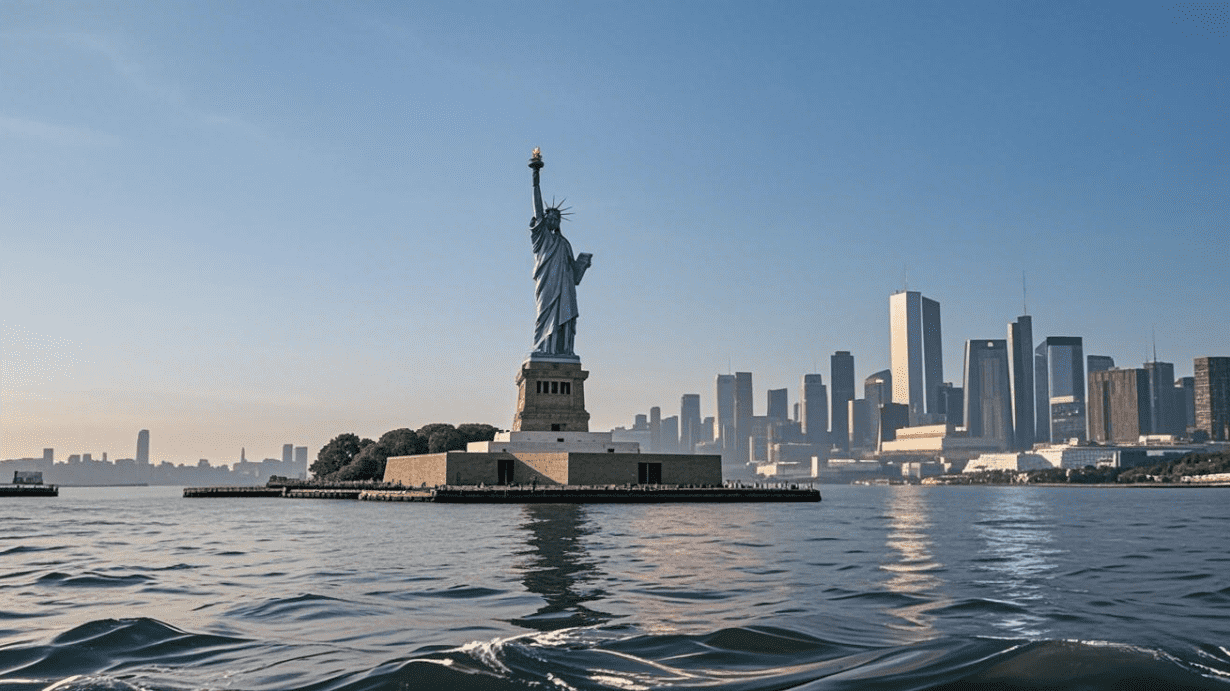American Society Today: An Era of Diversity, Transformation, and Challenges
 Apr. 28th, 2025
Apr. 28th, 2025
In 2025, American society is undergoing rapid changes marked by diversity, innovation, and contradictions. Tradition and progress collide, prosperity and inequality coexist, unity and division intertwine. To truly understand America today, one must acknowledge both its opportunities and its ongoing challenges.
Diversity: The New Normal of American Society
Historically known as a “melting pot”, America today resembles more of a vibrant mosaic. According to the U.S. Census Bureau, by 2024, minorities — defined as non-White groups—make up nearly 40% of the population. Hispanic, Asian, and African American communities continue to grow steadily.
This demographic shift not only reshapes neighborhoods but also profoundly influences culture, education, business, and politics. New languages, art forms, religious practices, and lifestyles enrich the American tapestry while also presenting challenges around integration and social cohesion.
Opportunities: Cultural innovation, enhanced global competitiveness.Challenges: Identity conflicts, risks of social fragmentation.
Economic Landscape: Prosperity Amid Inequality
The U.S. economy remains one of the strongest globally. Technology, finance, healthcare, and renewable energy sectors are thriving, fueled by advancements in artificial intelligence and biotechnology.
However, income and wealth disparities persist. According to a 2024 Pew Research Center report, the top 10% of Americans control about 70% of national wealth, while the middle class has slightly contracted over the past decade.
Housing costs, medical expenses, and educational burdens weigh heavily on ordinary families, especially in major urban centers.
While high-skill jobs flourish, low-skill workers face threats from automation and outsourcing.
Opportunities: Technological innovation, new industries.Challenges: Class rigidity, unequal economic opportunities.
Social Issues: Balancing Freedom and Order
Contemporary American society remains deeply engaged in debates around racial equality, gender rights, gun control, reproductive rights, and immigration policies.
With the rise of social media, public discourse has become faster and often more polarized.
On one hand, civic participation has grown stronger; on the other hand, misinformation and extreme partisanship have strained the social fabric.
Movements around climate change, public health policies, and civil rights reveal both the strength of grassroots democracy and the fragility of public consensus.
Opportunities: Increased civic engagement, greater transparency.Challenges: Information overload, fragmented public dialogue.
Cultural Dynamics: Innovation and Global Influence
The American cultural industry continues to lead globally. Hollywood films, pop music, and digital content platforms like Netflix, YouTube, and TikTok set worldwide trends.
At the same time, emerging voices — minority artists, female directors, nontraditional narratives — are gaining greater recognition, reflecting the evolving inclusivity and dynamism of American culture.
Yet debates around cultural appropriation and historical narratives indicate a growing need to balance freedom of expression with respect for diversity.
Opportunities: Expanded cultural soft power, global reach.Challenges: Cultural tensions, diversified aesthetic expectations.
Political Landscape: Shifting Power Dynamics
The American political scene is experiencing profound changes. The rise of younger voters, the growing influence of immigrant populations, and the rebalancing of federal and local powers are reshaping traditional Democratic and Republican dynamics.
Following the 2024 presidential election, discussions around democratic reforms, election transparency, and policy accountability have become increasingly mainstream.
Although political polarization remains, the emergence of centrist movements and local innovation signals a potential for rebuilding public trust.
Opportunities: Active grassroots democracy, expanded civic innovation.Challenges: Higher governance complexity, risks to national cohesion.
Conclusion
America today stands at a critical juncture of transformation. It remains one of the world’s most dynamic and innovative nations, but it must also confront deep internal challenges and a rapidly evolving global environment.
The future of the United States will depend not only on its commitment to freedom, diversity, and innovation, but also on its ability to advance social justice, promote equal opportunities, and sustain rational public dialogue.
This ongoing journey reflects both the nation's enduring ideals and its ever-evolving realities.